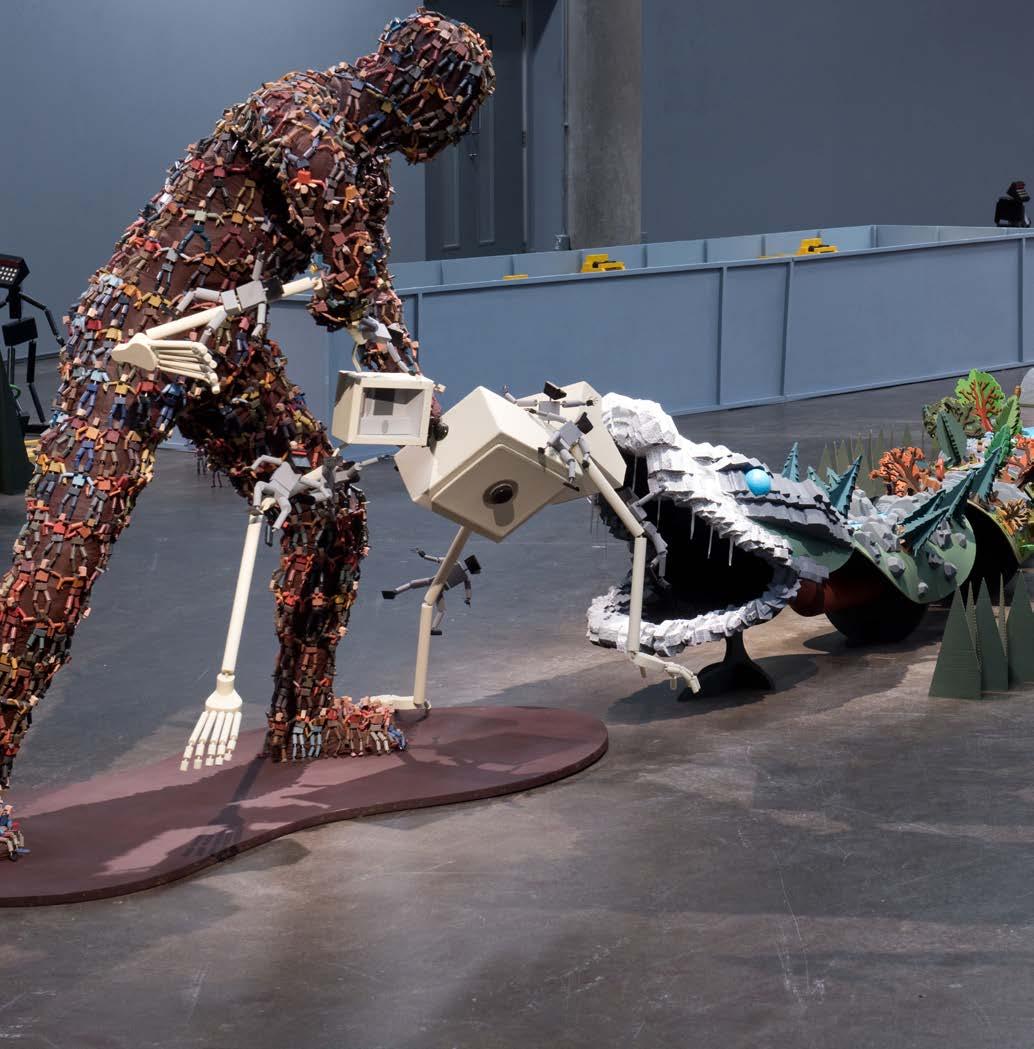
6 minute read
The people's game
Born out of a love for the beautiful game, the Fans Museum has become an integral part of Sunderland's footy community. We went behind-the-scenes to see how this special site is providing more than just a service to football…
They’re the lifeblood of the game; the ones who stand tall through rain, hail and howling wind. The ones who spend their wages travelling the UK, cheering on through drab performances and standing stoically through thick and thin. Football without fans is nothing. The Fans Museum is no exception. Born out of a love for the beautiful game, the museum has not only become an integral part of the region’s football community, but has developed into a symbol of acceptance and respect for people across the globe. But don’t just take our word for it. On the morning of 4 January, the city centre is still recovering from New Year celebrations and the freezing temperatures have forced people back to bed. The Stadium of Light lays dormant, as fans begin lining the pubs in preparation to watch Sunderland AFC take on Lincoln City F.C in a crucial League One clash.
Advertisement

But there’s a buzzing sound emanating from Monkwearmouth Station. A couple from Hampshire are wandering round the museum, gazing at an extensive wall of match-worn, goalkeeper shirts from SAFC’s previous goal-stoppers. In the opposite corner of the museum, a group of football fanatics from Australia are gazing at the Kevin Phillips’ signed golden boot, still reeling from meeting Sunderland’s F.A Cup winning captain, Bobby Kerr. To the rear of the museum, the beer is flowing, sing-song is in full-swing and match-day camaraderie is high. Football fanatics from Holland have arrived in the building and they’re questioning Lincoln City supporters about their form, which player do they pin their season’s hopes on and is it this cold down in Lincolnshire. The Fans Museum perfectly encapsulates the very meaning of football. Connecting people through their love of football regardless of their shape, size, skin colour, sexuality or background. Everyone is welcome here - and it is evident from the minute you enter the building. The museum relies solely on visitor donations and its inspiring team of volunteers who come from various different backgrounds. Ex-teachers, veterans, Londoners, Northerners - you name it, they turn up week after week, sharing their expert knowledge, their personal stories and their enthusiasm for football, with anyone who walks through the door. It’s fair to say that the Fans Museum has given visitors and volunteers alike a new purpose, a new start - or a fresh way of thinking. Of course, football and Sunderland is the common passion, but there’s a great emphasis on improving health, wellbeing and education for visitors, volunteers and the entire community. Outreach work is a key sector for the museum. In February of this year, Michael Ganley and team raced 15 miles south of Sunderland to Prince Bishops Shopping Centre, racing against time to quickly erect a pop-up museum in just three days for the half-term holidays. The reason of their visit? To bring families together, to create lasting memories and support the wonderful staff at St Cuthbert’s Hospice through a week-long fund-raising campaign. Their week in Durham was a resounding success. They were frequented by former player and caretaker manager, Kevin Ball, and word spread far and wide as record numbers flooded through the doors. Donations for the hospice soared. It goes to show what effect the beautiful game can have on the community!
THEFANSMUSEUM.ORG
BE SURE TO FOLLOW SUNDERLAND VIBE ONLINE AND ON SOCIAL MEDIA TO GET YOUR CULTURE FIX THIS SPRING!
Music matters…
We think our incredible music sector deserve a bit love in light of recent events, too. So, now that we're all hunkering down indoors, below is a list of inspiring music groups, who are essential to the community. They need your help to keep the tunes coming to the city after this pandemic has blown over. Stick on your favourite album, donate to the cause and show some support for our city's wonderful music independents!
Pop Recs Sunderland’s much-loved independent culture hub, Pop Recs, has been at the forefront of the musical scene in the city for years! Headed up by the affable team of Dave, Michael and Phil, Pop Recs not only offers a niche range of independent records from local artists, but they also run community workshops for all ages, host live gigs and help develop the city's brightest talent. The lads have become an integral part of Wearside's blossoming culture community and we think it's vital they live to fight another day. Show your support for this team of musical heroes online and on social media - and if you can, why not give a little or donate the price of a coffee to the team? You can reach them on PayPal at poprecsltd@ gmail.com, or head to their Facebook page for more information on how to support. FACEBOOK.COM/ POPRECSLTD
We Make Culture We'd also like to big up the team at We Make Culture! These cool cats have been helping to develop creative confidence in emerging talent for some time now, and their mission is to give everyone in the city access to music. Follow the link to find out how you can help. Keep doing what you're doing, guys! FACEBOOK.COM/ WEMAKECULTURE
Welcome to the Vibe Vault! We're travelling back in time to explore the moments, the people and the memories that helped shaped Sunderland. Join us, as we delve into the #VibeVault and shine a light on yesteryear.
*Special thanks to John Bage

The Catalina arriving into Sunderland Harbour
Perhaps this was the first ever Sunderland Airshow?
On the 30th June 1947, a different type of boat sailed into Sunderland harbour. Watched by hundreds of curious onlookers, a flying boat touched down between the piers for the first time in the history of the port of Sunderland. Onlookers had just witnessed The Catalina land on Wearside. An American made 'water bird', the Catalina served around the world with the wartime Royal Air Force. Involved in the search for the infamous Bismarck, RAF Catalinas were ahead of their time and vital to the RAF war effort during WW2. After taxiing up the River Wear to the lower buoys near Sunderland Corporation Quay, 12 Swedish seamen passengers were welcomed to Britain by Mr S. C. Wright, Swedish Consul for Sunderland. They were the new crew-members for Swedish steamer AIDA, a 9100 ton vessel that was under construction at the Short Brothers Ltd Shipyard in Pallion. On the Monday night, the Catalina would take off from Sunderland, heading on return flight to Gothenburg. Poole Harbour in Dorset was the only place recognized by the Customs Authorities as a landing base for flying boats. Special permission had to be obtained from the London head-quarters of H. M. Customs, just so the Catalina could dock at Sunderland as a return flight back to Sweden could cause some serious fuel worries! Every Tuesday at noon, once the Catalina had arrived in Wearside, Captain T. Eiserman, master of the ss AIDA, would wait patiently by Corporation Quay - ready and waiting to greet his new crew upon their arrival into Wearside.
WE'D LOVE TO HEAR ALL ABOUT THE TALES, MEMORIES AND STORIES YOU'VE GOT FROM LIFE IN AND AROUND THE CITY. GET IN TOUCH ONLINE USING #VIBEVAULT







